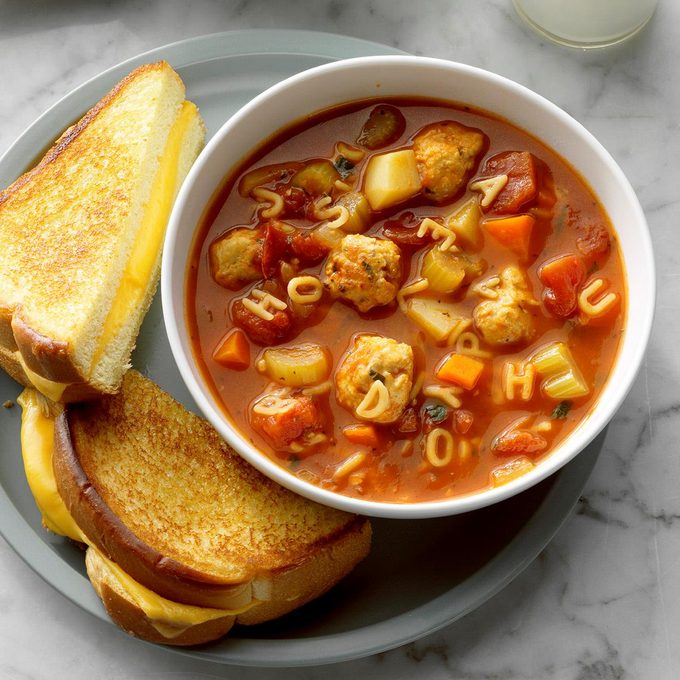
Meatball Alphabet Soup
Bite-sized meatballs made from ground turkey perk up this fun alphabet soup. A variety of vegetables are mixed in a rich tomato broth seasoned with herbs. —Taste of Home Test Kitchen
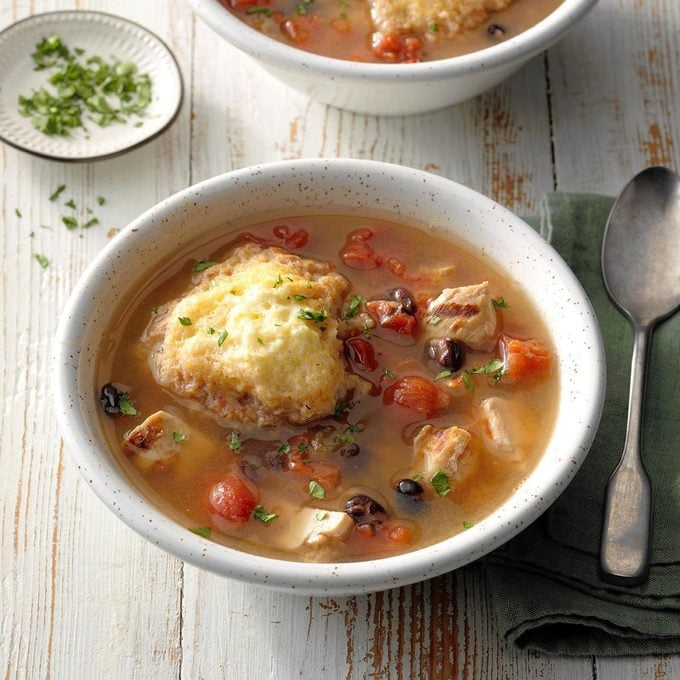
Chipotle Chicken Soup with Cornmeal Dumplings
I combined two of my favorite recipes and came up with this filling soup that has a Tex-Mex flair. The cornmeal dumplings are the perfect finishing touch. —Nancy Granaman, Burlington, Iowa
Pressure-Cooker English Pub Split Pea Soup
This family favorite is the same recipe my grandmother used. Now with the magic of today's appliances, I can spend 15 minutes putting it together, walk away for a bit and then it's "soup's on!" Finish it with more milk if you like your soup a bit thinner. —Judy Batson, Tampa, Florida
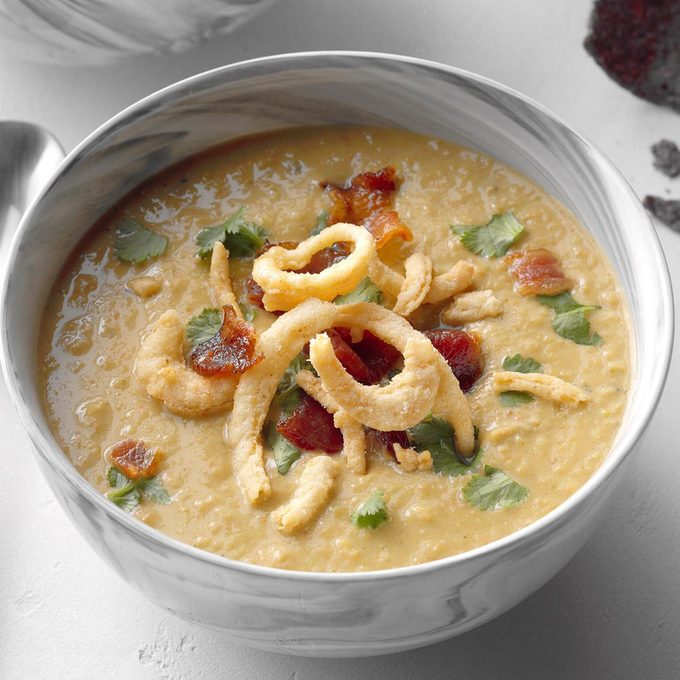
Mexican Leek Soup
This soup is so satisfying. You can substitute other beans, use kale instead of spinach or add leftover corn. For brunch, I add a fried egg on top. For dinner, my husband adds lots of hot sauce! —Donna Ahnert, Scotia, New York
Spicy Veggie & Lentil Soup
I enjoy this recipe because it's meatless, inexpensive and simply delicious! You can substitute any vegetables you like—it's all a matter of preference. Serve warm pita bread on the side. —Geraldine Hennessey, Glendale, New York
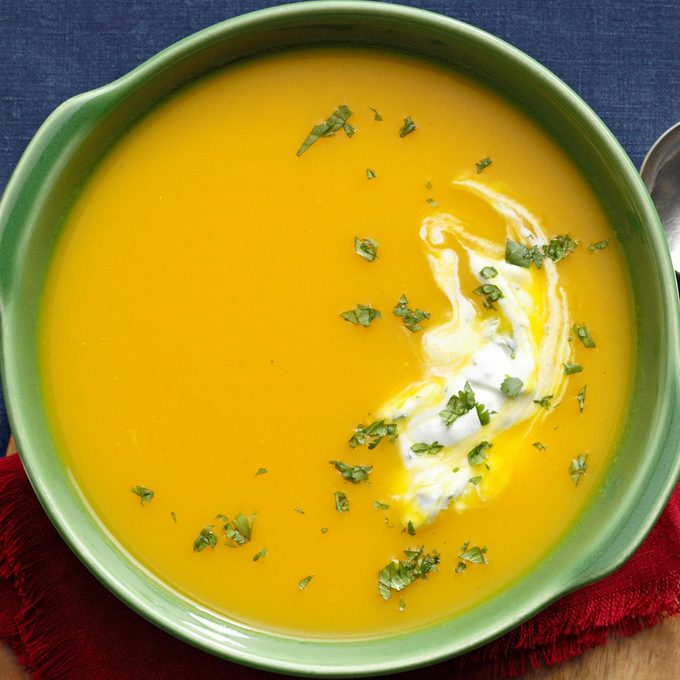
Curried Squash Soup
Cayenne pepper gives a little kick to this pretty curried squash soup, a first course that everyone seems to love. It can be made several days ahead to fit a busy schedule, then heated up whenever needed. —Evelyn Southwell, Etters, Pennsylvania
If you love squash, you have to try this butternut apple soup!
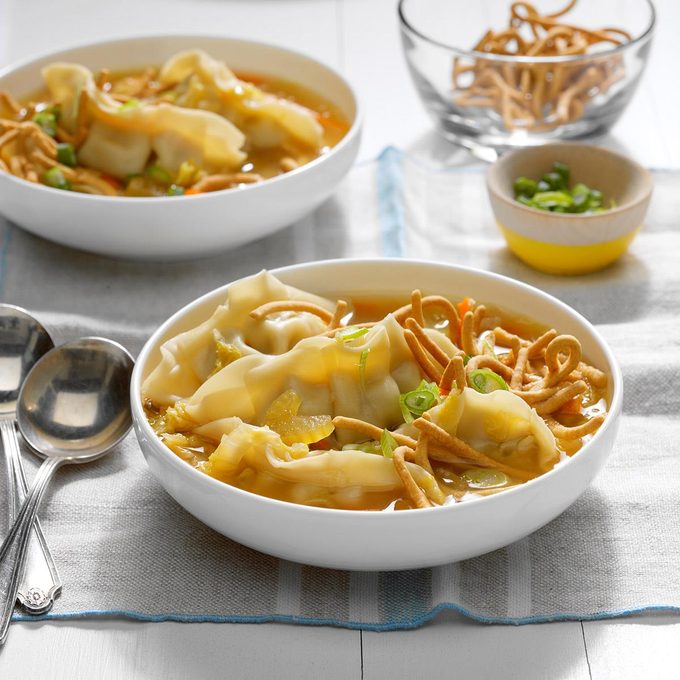
Easy Pot Sticker Soup
Since my husband and I have soup often, I'm always coming up with something new. I saw potstickers in the freezer and decided to feature them in Asian soup. The results were delicious. Rice vinegar provides just the right tang, and the green onions and carrots add color. Stir in chopped cabbage or bok choy if you like. A little sesame oil goes a long way, but you can always add a bit more. —Darlene Brenden, Salem, Oregon
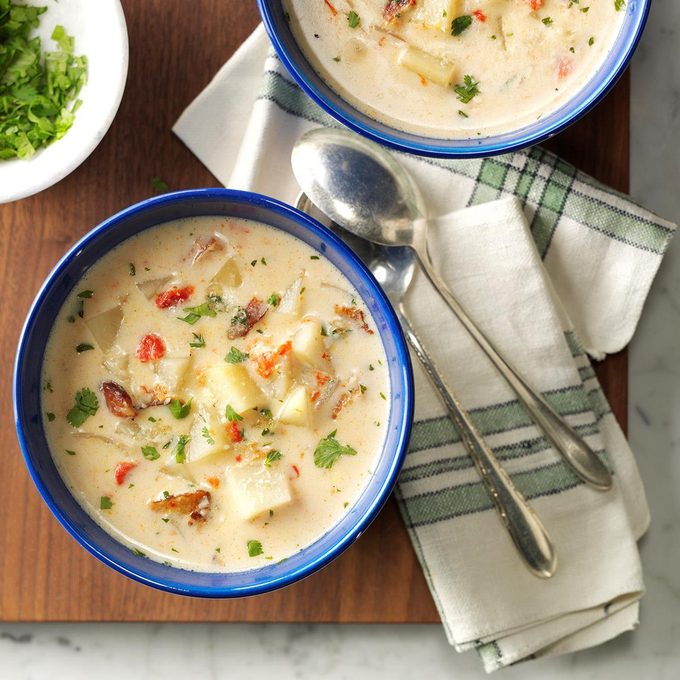
Pressure-Cooker Potato Soup
I decided to add some character to a basic potato chowder with roasted red peppers. The extra flavor gives a deliciously unique twist to an otherwise ordinary soup.—Mary Shivers, Ada, Oklahoma
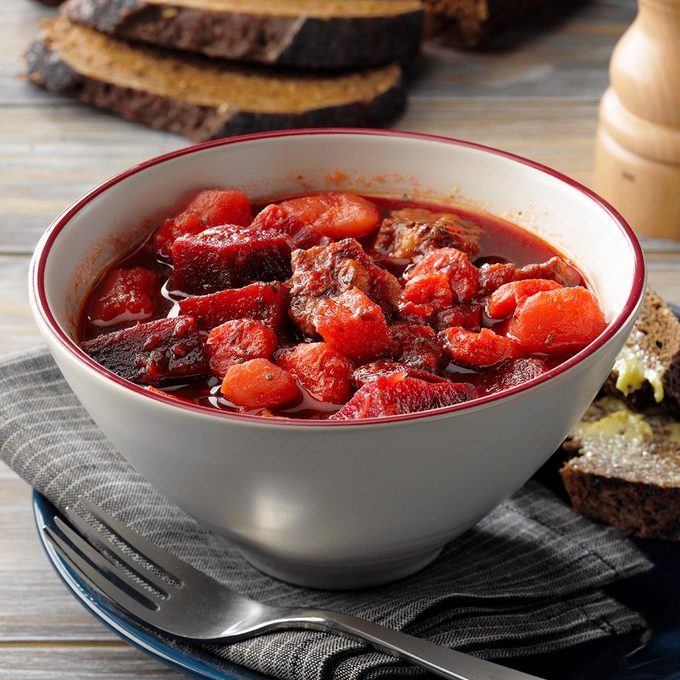
Red Flannel Stew
When I was a child, every Saturday night was red flannel night. Grandpa and I wore our red flannel long underwear to supper and Grandma, the cook, dressed in a long calico dress and sunbonnet. We'd eat this beet stew spooned over fluffy southern-style biscuits. Grandma learned to make the stew from earlier generations of our family. —Kathy Padgett, Diamond City, Arkansas
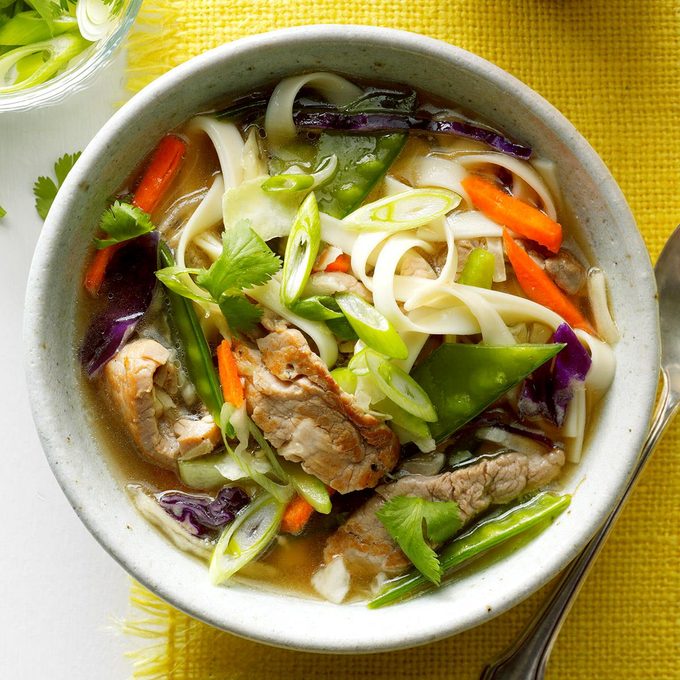
Asian Long Noodle Soup
This flavorful soup is perfect for when you want something warm and filling in a hurry. If you can't find long noodles, angel hair pasta is a good substitute. —Carol Emerson, Aransas Pass, Texas
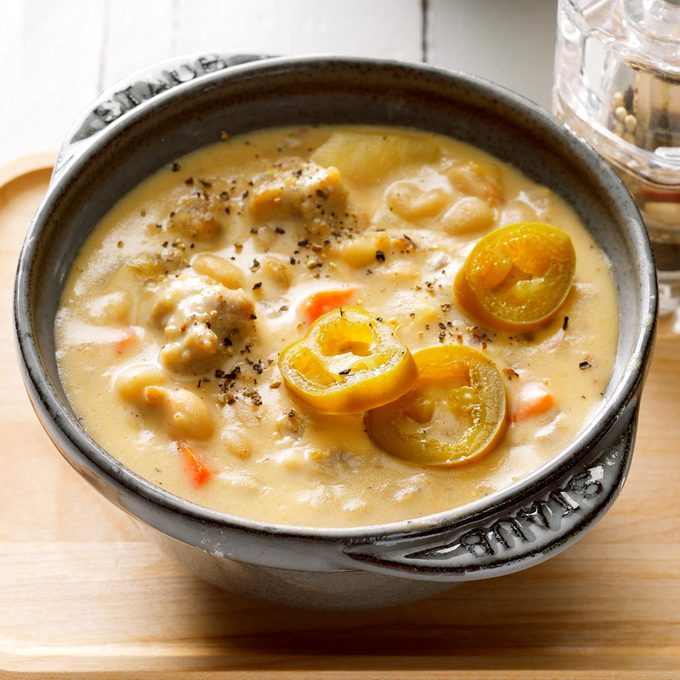
Bratwurst Soup
I came up with this recipe one day when I had some leftover bratwurst. It has been a favorite of my husband's ever since and is requested whenever the guys are hanging out. —Anna Miller, Churdan, Iowa
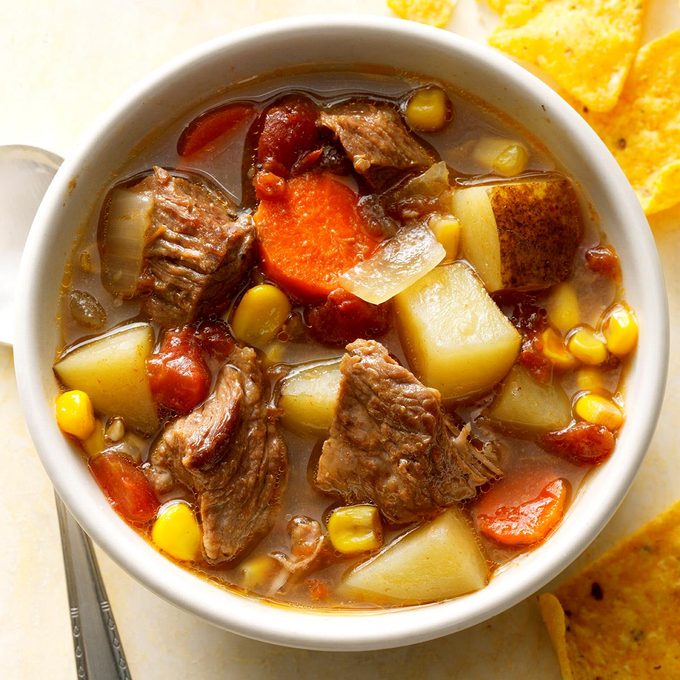
Slow-Cooked Mexican Beef Soup
My family loves this stew, and I'm happy to make it since it's so simple! You can serve with cornbread instead of corn chips to make it an even more filling meal. —Angela Lively, Conroe, Texas
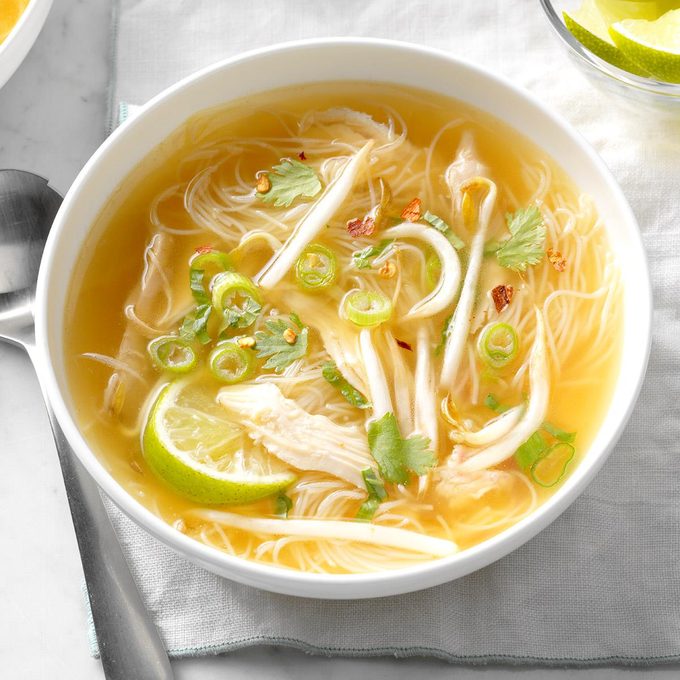
Thai Chicken Noodle Soup
This slow cooker soup is a semi-homemade version that coaxes all of the flavor out of a rotisserie chicken. Do the prep work the day before and toss the broth-making ingredients into the slow cooker in the morning. It's a snap to finish when you get home. —Beth Jacobson, Milwaukee, Wisconsin
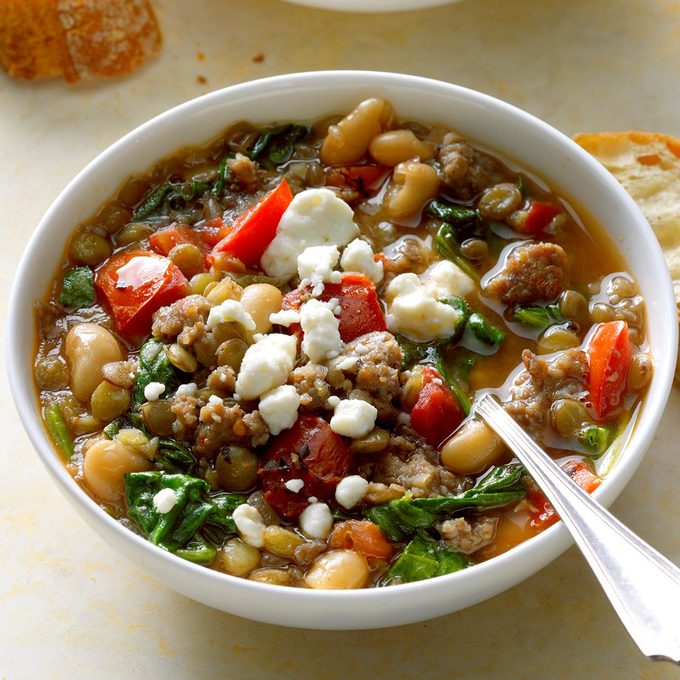
Spinach and Sausage Lentil Soup
During the cooler months of the year, this soup makes regular appearances on our dinner table. It is approved by all, including my picky 6-year-old. —Kalyn Gensic, Ardmore, Oklahoma

Creamy Cauliflower Pakora Soup
y husband and I often crave pakoras, deep-fried fritters from India. I wanted to get the same flavors but use a healthier cooking technique, so I made soup using all the classic spices and our favorite veggie, cauliflower! —Melody Johnson, DePere, Wisconsin
Great Northern Bean Stew
This thick and hearty stew with great northern beans is sure to chase the winter chills away. —Mildred Sherrer, Fort Worth, Texas
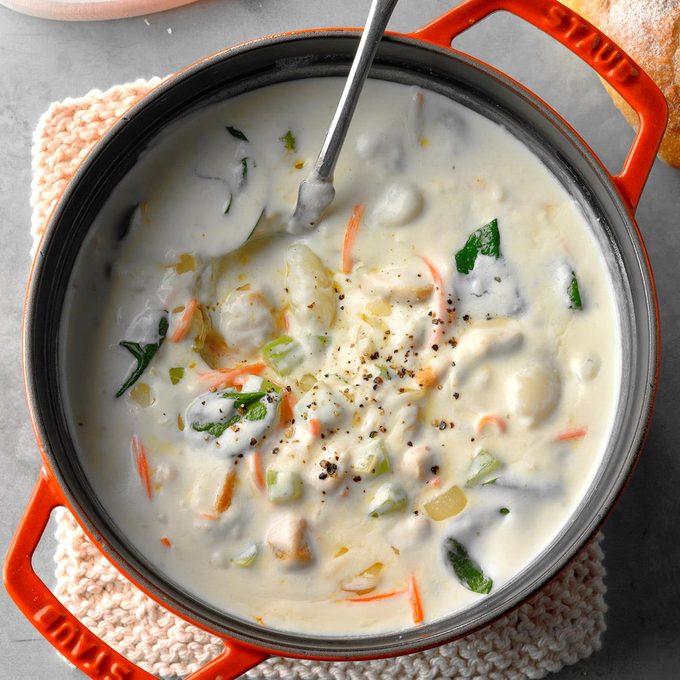
Creamy Chicken Gnocchi Soup
I tasted a similar soup at Olive Garden and wanted to try and make it myself. Here's the delicious result! It's wonderful on a cool evening. —Jaclynn Robinson, Shingletown, California
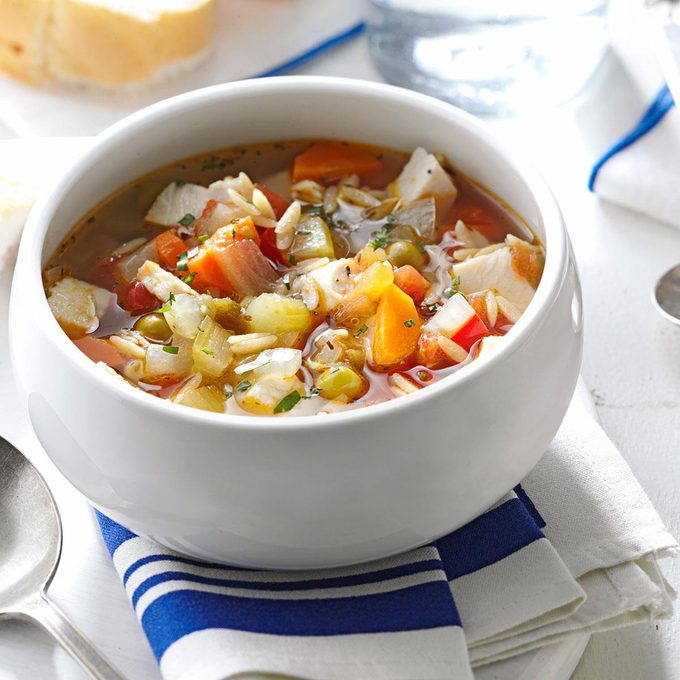
Skinny Turkey-Vegetable Soup
The blend of flavors and colors in this hearty soup will bring everyone at the table back for more. —Charlotte Welch, Utica, New York

Wintertime Braised Beef Stew
This easy beef stew is incredibly rich. Since it's even better a day or two later, you may want to make a double batch. —Michaela Rosenthal, Woodland Hills, California
Swedish Meatball Soup
To me, this is a very comforting, filling, homey soup. I especially like cooking it during winter months and serving it with hot rolls, bread or muffins. —Deborah Taylor, Inkom, Idaho
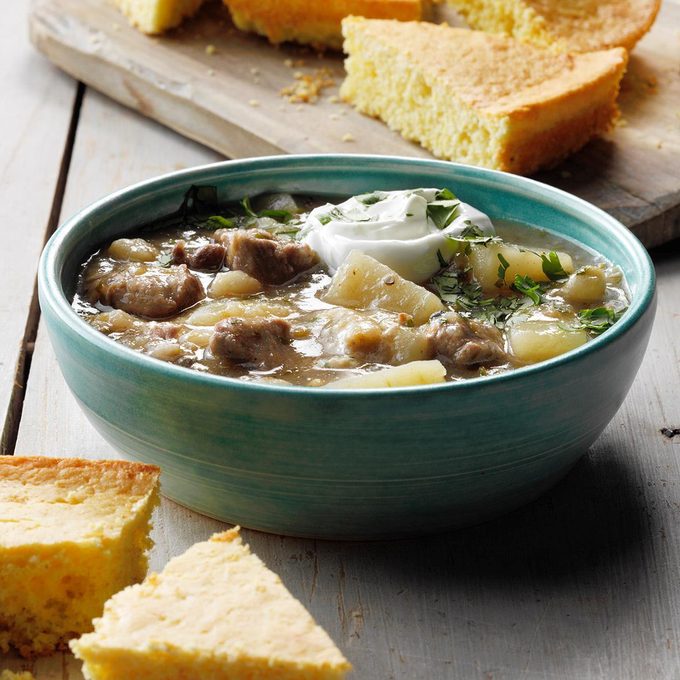
Pork and Green Chile Stew
Tender pork, green chilies and hominy have roots in Southwestern cuisine but help bring the heat to the Midwest for those long winter nights. An easily adaptable stew, it's ready in 4 hours if cooked on high in a slow cooker, or in 8 hours if cooked low and slow. —Paul Sedillo, Plainfield, Illinois
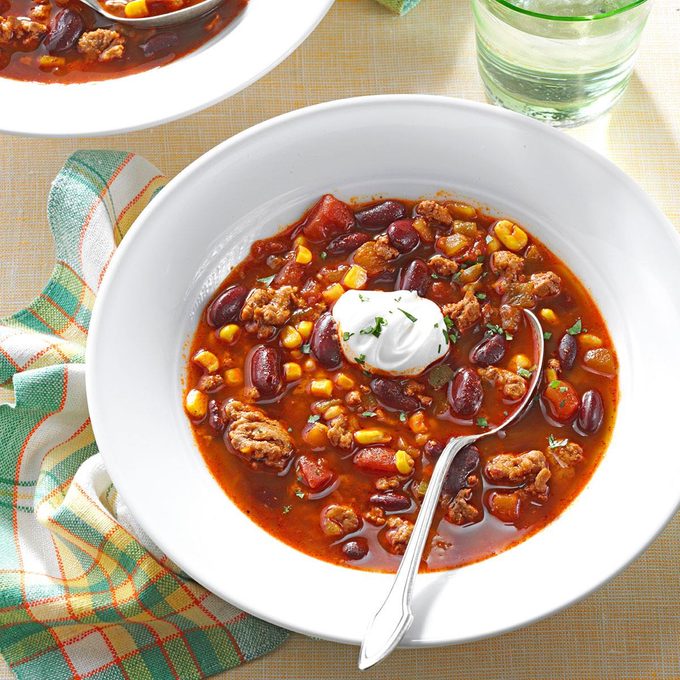
Southwest Turkey Soup
Ground turkey and a handful of other ingredients are all that's required for this satisfying soup that's spiced with salsa, green chilies and chili powder. It's a meal for busy weeknights in the winter. —Genise Krause, Sturgeon Bay, Wisconsin
Want more warm, hearty soup ideas? Check out these slow cooker chili recipes.
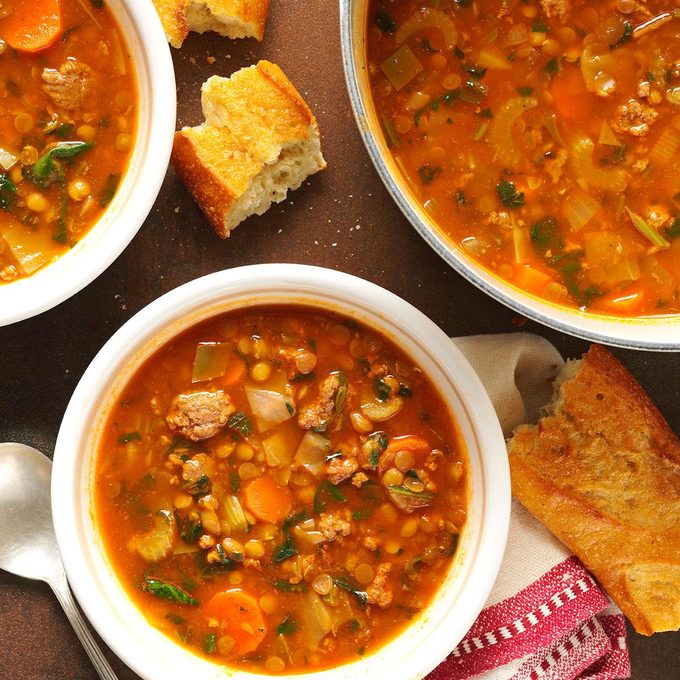
Beef Lentil Soup
You can prepare this soup as the main course in a hearty lunch or dinner. On cold winter evenings here in New England, I've often enjoyed sipping a steaming mugful in front of our fireplacel. —Guy Turnbull, Arlington, Massachusetts

Fiesta Turkey Tortilla Soup
I'm always thankful when I can pull such a delicious soup together in under 30 minutes. —Amy McFadden, Chelsea, Alabama
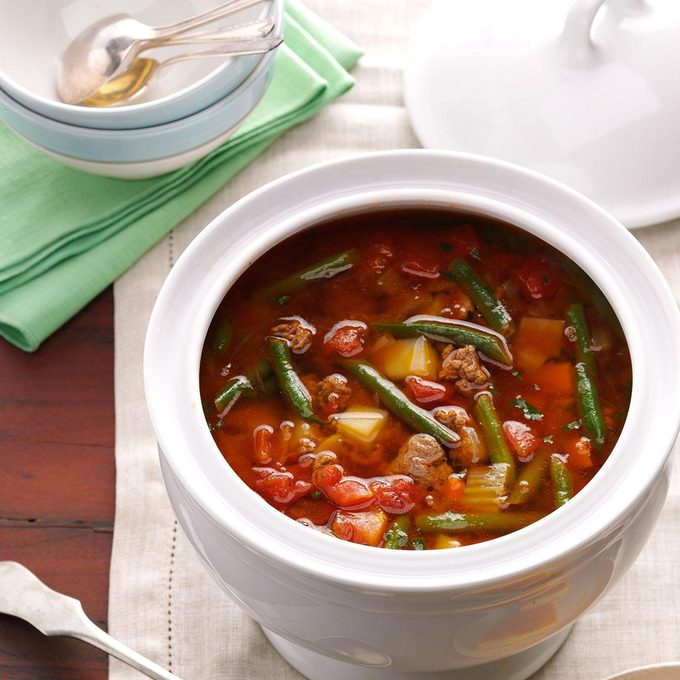
Savory Winter Soup
Even my father, who doesn't particularly like soup, enjoys my full-flavored version of traditional vegetable soup. He asked me to share the recipe with Mom, and I gladly obliged! —Dana Simmons, Lancaster, Ohio
Potato Bacon Chowder
This chowder is like a bacon-topped baked potato in a bowl. On cold winter days, my family is thrilled to see this meal on the table.—Jacque Manning, Burbank, South Dakota
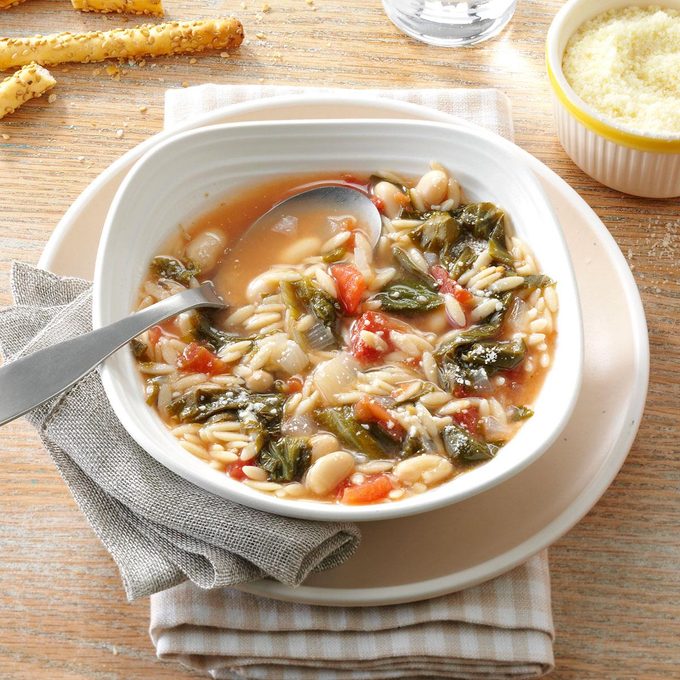
White Bean Soup with Escarole
This escarole and bean soup has become a favorite because it uses kitchen staples, it's packed with healthy ingredients and is a cinch to prepare. If I can't find escarole, I sub fresh spinach at the very end of cooking. —Gina Samokar, North Haven, Connecticut

Chunky Beef and Vegetable Soup
Nothing cures the winter blahs like good comfort food, including this beef vegetable soup I invented one chilly day. Serve with crusty bread or rolls. —Billy Hensley, Mount Carmel, Tennessee
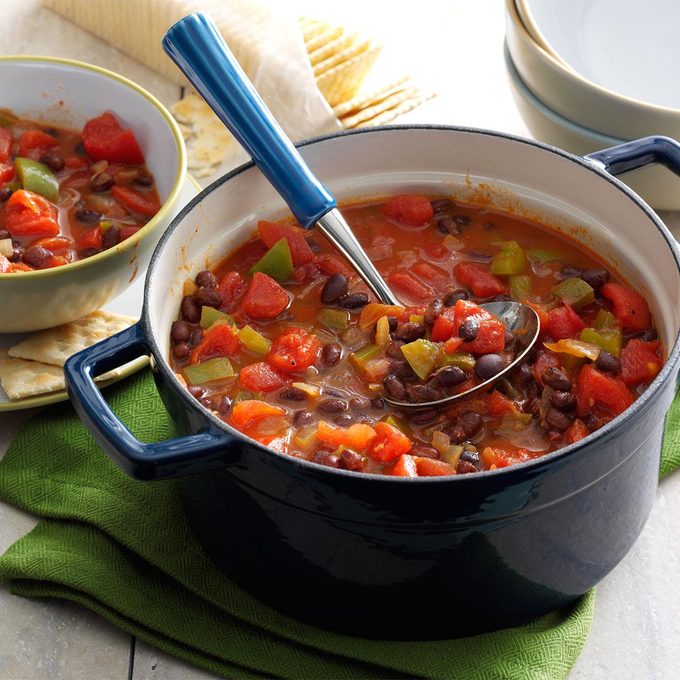
Black Bean-Tomato Chili
My daughter Kayla saw a black bean chili while watching a cooking show and called me about it because it looked so good. We messed with our own recipe until we got this easy winner. —Lisa Belcastro, Vineyard Haven, Massachusetts
Garlicky Cheddar Cheese Bisque
I came up with a cheddar cheese soup a while ago and decided to give it a boost with a variety of root vegetables. Crushed pita chips and fresh parsley make fun garnishes. —Patricia Harmon, Baden, Pennsylvania
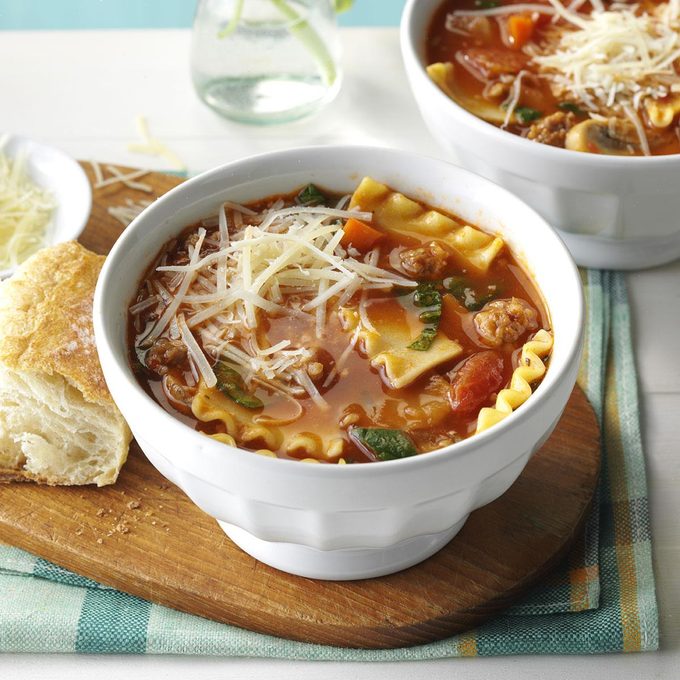
Slow-Cooker Lasagna Soup
Every fall and winter, our staff has a soup rotation. I have modified this recipe so I can prep it the night before and put it in the slow cooker in the morning. My colleagues love it! —Sharon Gerst, North Liberty, Iowa
Carrot-Parsnip Bisque
Warm and comforting, this delicious soup makes a pretty presentation. Easy to prepare, it's a treat to serve for family dinners and special enough for guests. —Lisa Speer, Palm Beach, Florida
Provencal Ham & Bean Soup
There is nothing quite like the wonderful feeling of when you open the door and smell this delicious stew bubbling away in the slow cooker. To make preparation even easier, I like to start it the night before, and then all I have to do is turn on the slow cooker in the morning. —Lyndsay Wells, Ladysmith, British Columbia
Mexican Cabbage Roll Soup
I love sharing our humble and hearty soup made with beef, cabbage and green chiles. A blast of cilantro gives it a sunshiny finish. —Michelle Beal, Powell, Tennessee

Turkey and Dumpling Soup
To show some love at a family gathering, I fill a stockpot with this rich turkey soup brimming with veggies, potatoes and dumplings. —Lea Lidel, Leander, Texas
Wild Rice Mushroom Soup
I think mushrooms often get used only as a seasoning or added flavor, but I think they are delicious enough to be the main part of a meal. This recipe uses a large quantity of mushrooms and the result is delicious. Even though this contains some dairy, this soup freezes quite well! —Wendy Campbell, New Wilmington, Pennsylvania
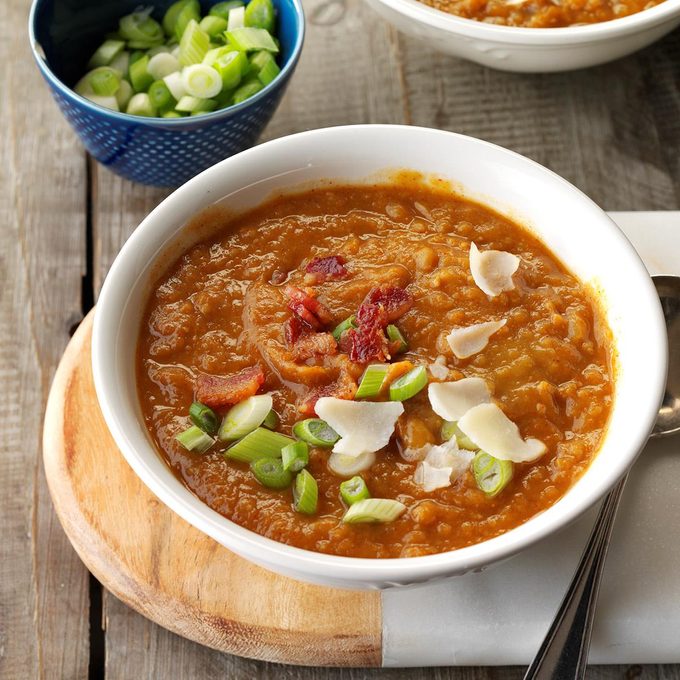
Spicy Sweet Potato & Chickpea Soup
I love hearty, healthy entree soups, and a bowl of this southwestern sweet potato-soup really satisfies. I add a can of chickpeas for protein, making it ideal for an easy dinner. And it reheats and even freezes beautifully, so I often make a double batch. —Jennifer Fisher, Austin, Texas
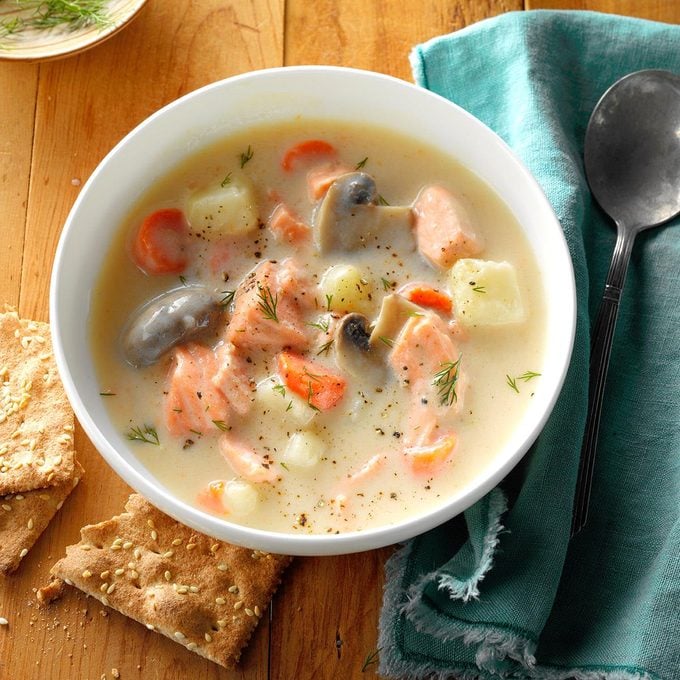
Salmon Dill Soup
This is the best soup I have ever made, according to my husband, who loves salmon so much that he could eat it every day. It's a treat for both of us, so when I get some, I try to make it a very special dish like this one. —Hidemi Walsh, Plainfield, Indiana
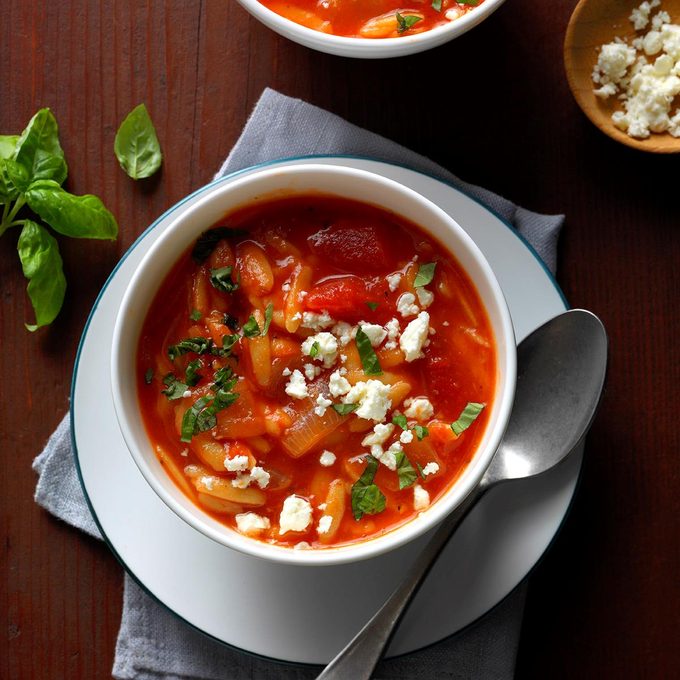
Greek Tomato Soup with Orzo
My recipe for manestra, which means orzo in Greek, is straightforward and very easy to make. You need only a few steps to transform simple ingredients into a creamy one-pot wonder. —Kiki Vagianos, Melrose, Massachusetts
Southwest-Style Wedding Soup
I turned leftover ground chicken into meatballs and dreamed up this cozy southwestern soup. Now my Italian family asks for it over traditional wedding soup. —Teena Petrus, Johnstown, Pennsylvania
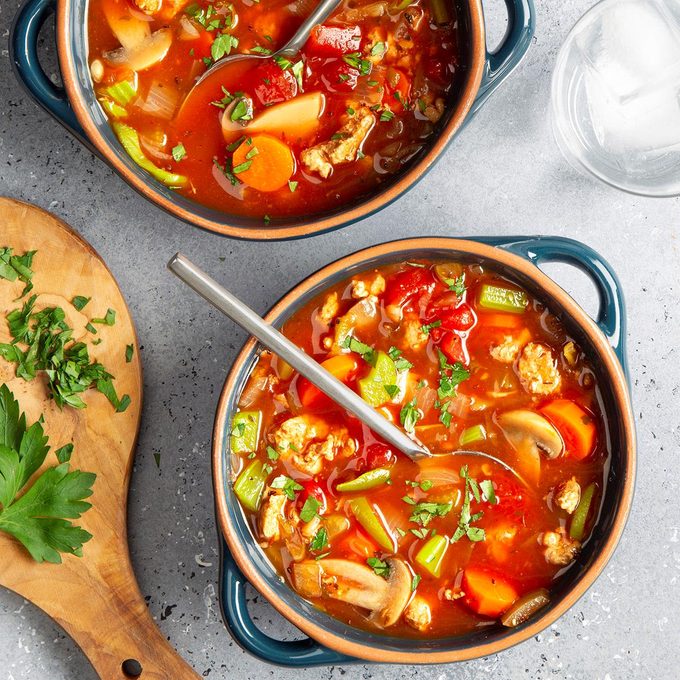
Ground Turkey Vegetable Soup
Low-sodium ingredients don't diminish the full flavor of this brothy ground turkey vegetable soup. The turkey lends a heartiness that everyone will welcome on a cold blustery evening. —Bonnie LeBarron, Forestville, New York
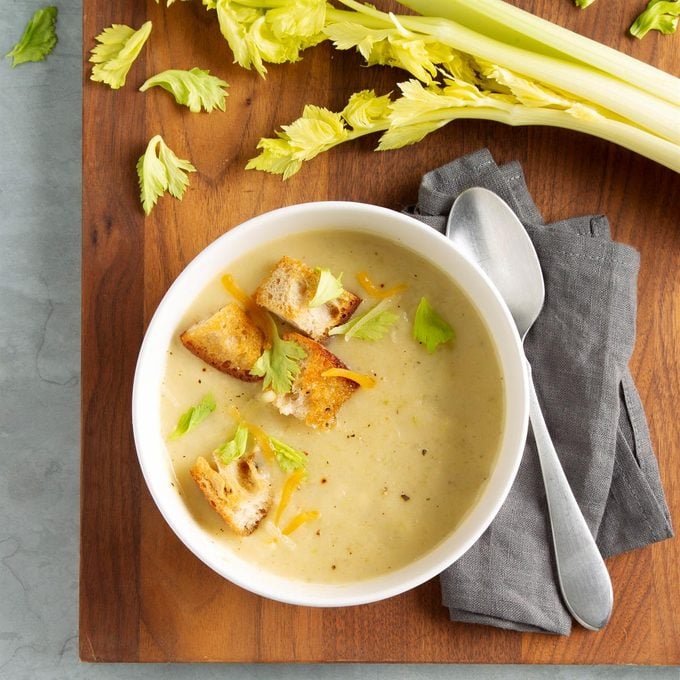
Cream of Celery Soup Recipe
This rich cream of celery soup recipe will warm up any family gathering or quiet evening at home. With just the right amount of onion flavor, it's creamy and crowd-pleasing. —Janet James, Bluff City, Tennessee
Shortcut Sausage Minestrone
I call this surprisingly good soup my "kick-butt" soup for its soothing powers. My daughter-in-law always asks for this soup when in need of a healing touch. —Marta Smith, Claremont, Pennsylvania
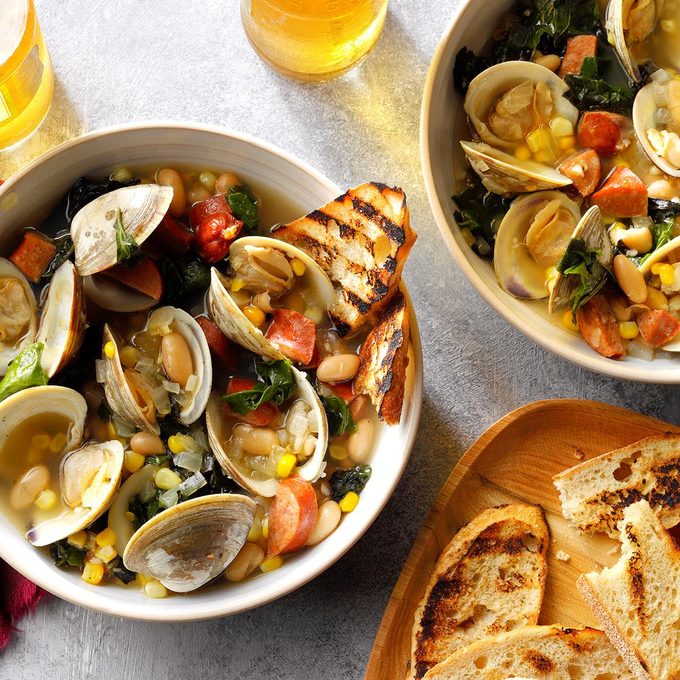
Clam Stew
This clam stew highlights the fresh, sweet and salty clam flavor, with the chorizo adding a little kick. Fresh Swiss chard greens from our garden, corn and cannellini beans round out the flavor profile. The best part, though, is dipping crusty bread into the delicious broth! —Pamela Gelsomini, Wrentham, Massachusetts
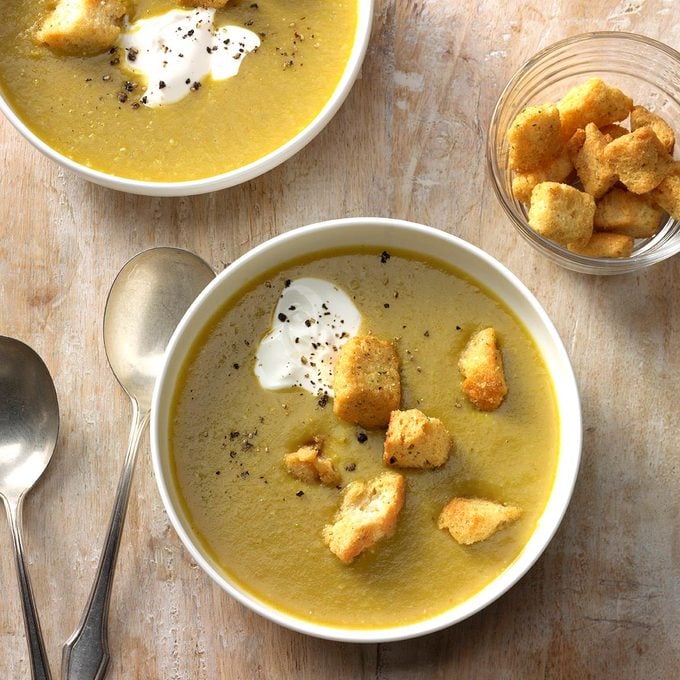
Simple Asparagus Soup
My family and friends love this soup. It's elegant and unusual, but the hardest part of making it is occasional stirring. —Kathryn Labat, Raceland, Louisiana
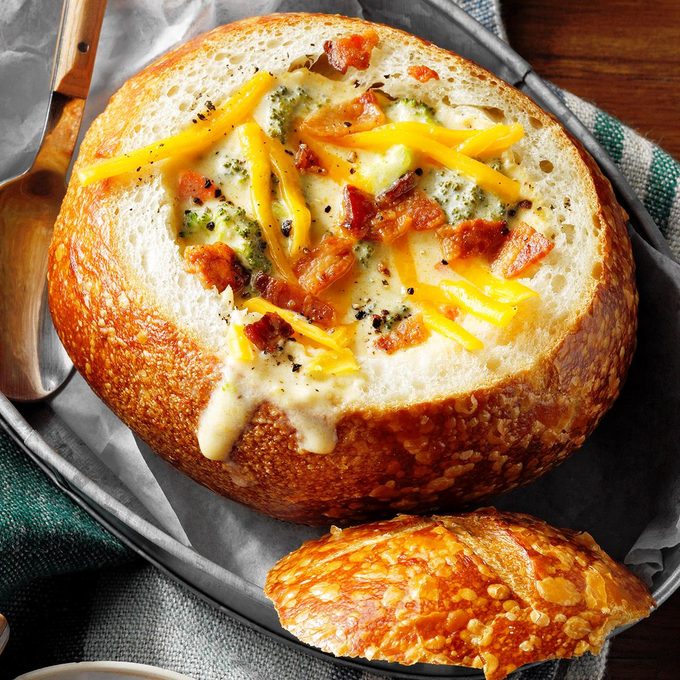
Cheesy Broccoli Soup in a Bread Bowl
This creamy, cheesy broccoli soup tastes just like the one served at Panera Bread! My family requests it all the time. You can even make your own homemade bread bowls with the recipe on my blog, Yammie's Noshery. —Rachel Preus, Marshall, Michigan
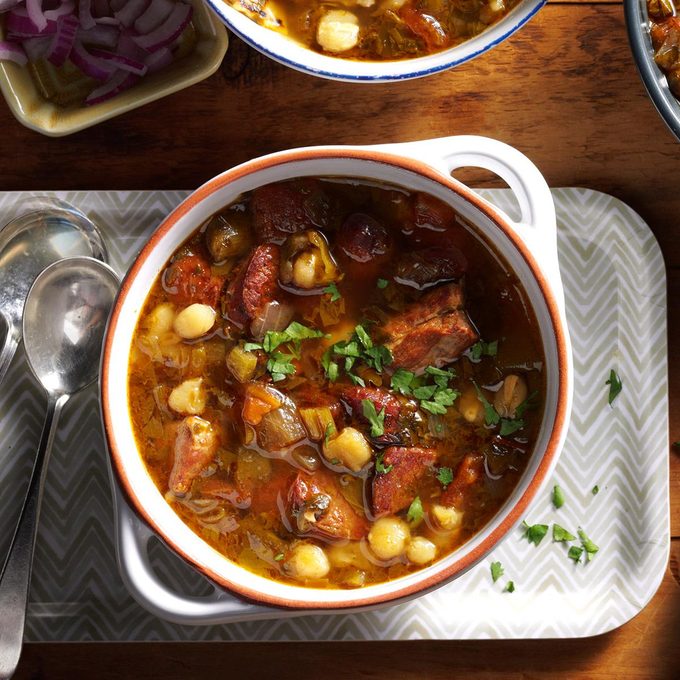
Easy Pork Posole
Looking for a meal in a bowl? Sit down to a Mexican classic full of cubed pork, sliced sausage, hominy and more. It all goes into the slow cooker, so you can come home at night to a table-ready dinner. —Greg Fontenot, The Woodlands, Texas
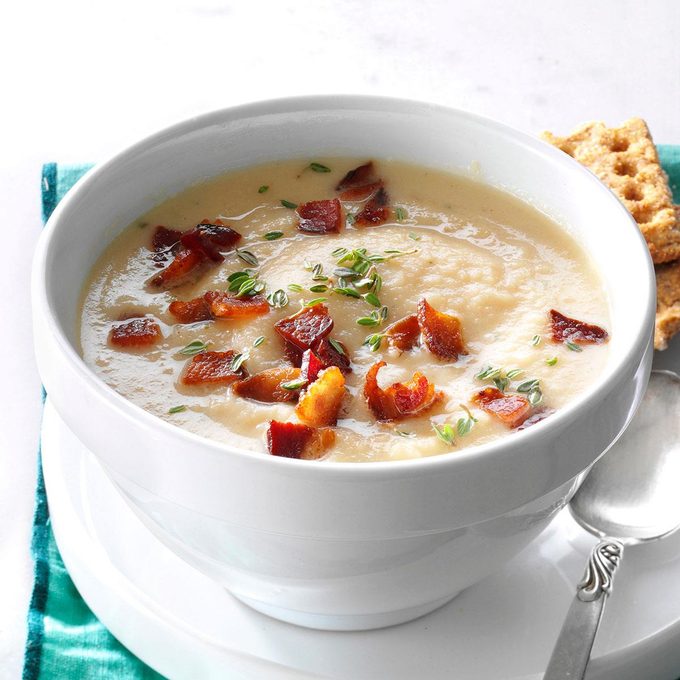
Creamy Root Veggie Soup
On chilly nights, we fill the pot with parsnips and celery root for a smooth, creamy soup. Garlic, bacon and fresh thyme make it even better. —Sally Sibthorpe, Shelby Township, Michigan

French Onion Soup with Meatballs
I got the idea for how to make this soup after I went to a brewhouse restaurant that put ale in their gravy. I make this every time the weather starts to cool down in the fall—it's comfort food for the soul. —Crystal Holsinger, Surprise, Arizona
Roasted Autumn Vegetable Soup
Roasting sweet potatoes, carrots and parsnips brings out their best features. Blend them, and you have a warm, healthy soup for a cool fall night. —Stephanie Flaming, Woodland, California
Up Next: The Best Soup Recipes of 2021
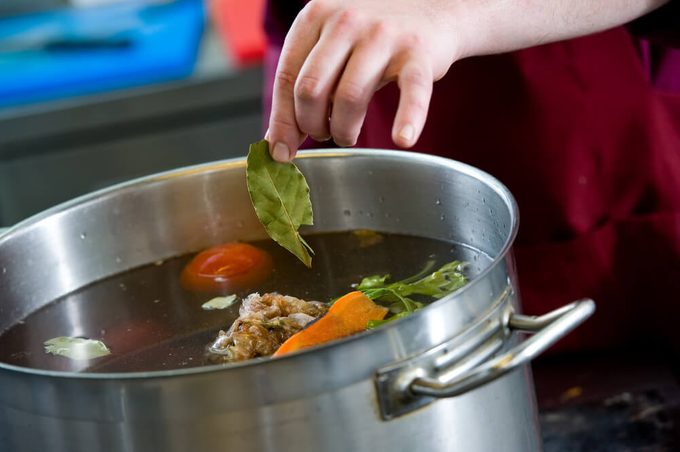





































0 Response to "Is Bay Leaves Good in Beef Soup"
Post a Comment